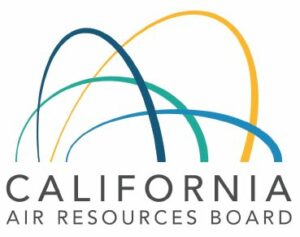Written on: January 1, 2023 by Doug Raymond
Welcome to the New Year! Just like other years, this year will be full of exciting regulatory activities. States will likely be busy in 2023 with volatile organic compound (VOC) regulations. As always, the California Air Resources Board (CARB) will continue to have issues to keep us busy. As well, the American Innovation & Manufacturing (AIM) Act via the U.S. Environmental Protection Agency (EPA) will continue.
I look forward to working with you all in the New Year.
State VOC Regulation
In recent conversations concerning State VOC regulations, the Ozone Transport Commission (OTC) Model Rules were mentioned. As a reminder: OTC is a multi-State organization created under the Clean Air Act. It is responsible for advising the EPA on transport issues and for developing and implementing regional solutions to the ground-level ozone problem in the Northeast and Mid-Atlantic regions.

OTC brings together the States from Virginia to Maine to coordinate reductions in air pollution that benefit the whole region. It provides air pollution assessment, technical support and a forum where States can work together to harmonize their pollution reduction strategies. OTC members include Connecticut, Delaware, the District of Columbia, Maine, Maryland, Massachusetts, New Hampshire, New Jersey, New York, Pennsylvania, Rhode Island, Vermont and Virginia.
Over the years, Industry has worked with OTC to develop Consumer Product VOC Regulations that are modeled after CARB regulations. Currently, OTC has five Model Rules for Consumer Products, starting with Model Rule I and progressively becoming more stringent as we move toward Model
Rule V. OTC also has Model Rules for Architectural Paints.
In addition to those listed above, numerous other States have adopted some version of the OTC Model Rules:
• States that currently have effective Model Rule II: District of Columbia (Washington DC), Illinois, Indiana, Massachusetts, Maine, Michigan, New Jersey, Ohio, Pennsylvania and a section of Virginia.
• States that currently have effective Model Rule III or IV: Colorado, Connecticut, Delaware, Maryland, Rhode Island, New Hampshire, Utah and New York.
• To date, no States have adopted OTC Model V.
There was activity in 2022 in Ohio, Michigan and Colorado:
• Ohio had a rulemaking in 2022. The agency adopted OTC Model Rule IV. The effective date of the regulation will be July 1, 2023.
• Michigan worked on a rulemaking during 2022 that is continuing in 2023. The State will move to Model Rule IV. The effective date is not known at this time but is likely to be Jan.1, 2024 because that is the effective date for the Architectural Coatings Rule.
• Colorado had a hearing in late 2022 to implement a contingency rule if the State fails to meet attainment with 2008 ozone emission limits. The State’s proposed contingency measure is OTC Model Rule IV. Industry will likely not know the outcome of the attainment issue until sometime in 2025 or 2026 or even as late as 2027. I am working with the agency to determine the proper method of Industry notification and will keep readers updated.
Expected activity in 2023:
• New Jersey is likely to move to Model Rule IV. Timing and effective date is unknown.
• Washington DC is likely to have a rulemaking in 2023, as well. Initial thoughts were that it would adopt OTC Model Rule V. However, as no other State has gone to Model Rule V, it is likely DC will only move to OTC Model Rule IV. Again, the timing is unknown.
• Nevada is planning to start stakeholder engagement this year but there is no designated start time. However, since Colorado and Utah have adopted OTC Model Rule IV, hopefully we can convince Nevada to, as well.
• Oregon is expected to adopt Consumer Product VOC Regulations in 2023. It is surprising that this State has not adopted them before now, as the past Chair of the OTC Stationary Source Committee from Delaware now heads the Oregon Air Agency. Thus, it was expected that Oregon would adopt the OTC Model Rules earlier. Again, Oregon will likely adopt OTC Model Rule IV.
• Washington State is expected to follow Oregon’s actions.
To review these rules in more detail, visit www.otcair.org.
CARB
CARB Date Code
This is my friendly annual reminder about Product Dating/Date Coding. Make sure you are up-to-date on your date code filings, as this is an area where CARB has become even stricter and more observant; it is increasingly on the look-out for non-compliance.
Remember, date code information needs to be reported to CARB every year by your company if you do not use CARB’s standard date coding. California Section 94512 (b) product dating specifically requires all consumer products sold into the State to display the day, month and year the product was manufactured or a code indicating the date. CARB has been increasing its investigative activity and levying fines for non-compliance of this section.

The date or date-code information shall be located on the container or inside the cover/cap so that it is readily observable or obtainable (by simply removing the cap/cover) without irreversibly disassembling any part of the container or packaging. Information may be displayed on the bottom of a container as long as it is clearly legible without having to remove any product packaging.
CARB’s standard code must be represented separately from other codes on the product container so that it is easily recognizable as the following: YY DDD = Year Year Day Day Day. A manufacturer that uses this standard CARB code to indicate the date of manufacture does not have to report this code.
Failure to register a date code is subject to a fine. Every year the fines seem to go up in cost. Your date code explanation needs to be submitted to CARB Enforcement on an annual basis—on or before Jan. 31 of each year. Send by email to cpenforcement@arb.ca.gov.
Once again, Happy New Year! SPRAY